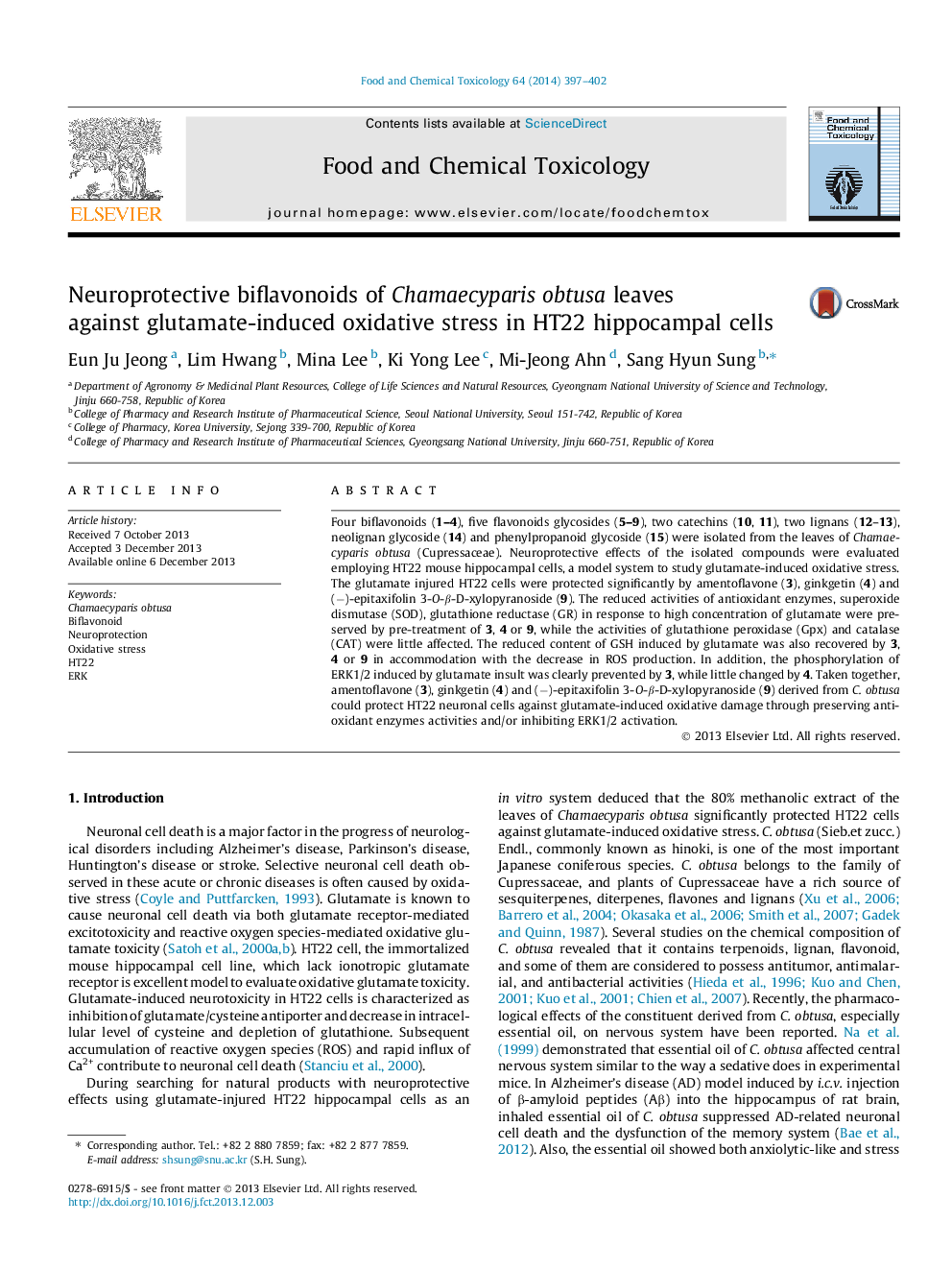| Article ID | Journal | Published Year | Pages | File Type |
|---|---|---|---|---|
| 5850959 | Food and Chemical Toxicology | 2014 | 6 Pages |
â¢Fifteen phenolic compounds were isolated from Chamaecyparis obtusa.â¢3, 4 and 9 showed protective effects in glutamate-injured HT22 cells.â¢The reduced activities of antioxidant enzymes induced by glutamate were preserved by 3, 4 or 9.â¢The reduced content of GSH, and the increased production of ROS by glutamate were attenuated by 3, 4 or 9.â¢The phosphorylated ERK1/2 proteins increased by glutamate was prevented by 3, while unaffected by 4.
Four biflavonoids (1-4), five flavonoids glycosides (5-9), two catechins (10, 11), two lignans (12-13), neolignan glycoside (14) and phenylpropanoid glycoside (15) were isolated from the leaves of Chamaecyparis obtusa (Cupressaceae). Neuroprotective effects of the isolated compounds were evaluated employing HT22 mouse hippocampal cells, a model system to study glutamate-induced oxidative stress. The glutamate injured HT22 cells were protected significantly by amentoflavone (3), ginkgetin (4) and (â)-epitaxifolin 3-O-β-D-xylopyranoside (9). The reduced activities of antioxidant enzymes, superoxide dismutase (SOD), glutathione reductase (GR) in response to high concentration of glutamate were preserved by pre-treatment of 3, 4 or 9, while the activities of glutathione peroxidase (Gpx) and catalase (CAT) were little affected. The reduced content of GSH induced by glutamate was also recovered by 3, 4 or 9 in accommodation with the decrease in ROS production. In addition, the phosphorylation of ERK1/2 induced by glutamate insult was clearly prevented by 3, while little changed by 4. Taken together, amentoflavone (3), ginkgetin (4) and (â)-epitaxifolin 3-O-β-D-xylopyranoside (9) derived from C. obtusa could protect HT22 neuronal cells against glutamate-induced oxidative damage through preserving antioxidant enzymes activities and/or inhibiting ERK1/2 activation.
